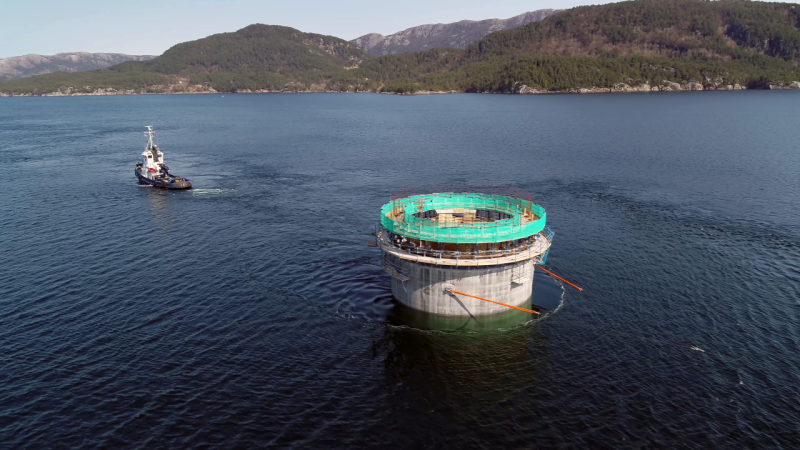Equinor and its partners have completed the initial phase of construction on the concrete spar substructures that will host the turbines for the 88-MW Hywind Tampen floating wind power project. With work completed on the first 20 m of 11 substructures at Aker Solutions' yard at Stord, the project now moves to the deepwater site at Dommersnes where the substructures will be completed to a total length of 107.5 m. This is the first concrete slipforming for an offshore project on the Norwegian continental shelf since the Troll A platform was delivered in 1995.
Hywind Tampen will be the world’s largest floating offshore wind farm and the world’s first to power offshore oil and gas platforms. It is also the first floating wind project from Equinor using concrete technology. The project is intended to provide electricity for the Snorre and Gullfaks offshore field operations in the Norwegian North Sea. The project was approved by the Norwegian government about a year ago.
“The project represents a direct transfer of technology from oil and gas to renewable,” said Olav-Bernt Haga, Equinor’s project director for Hywind Tampen. “The giant Troll A substructure was 369 meters. Now we are building 11 small Trolls. The project is on schedule despite the challenges around COVID-19.”
The balance of manufacturing for the project is also ongoing with the steel anchors being welded together at Aker Solutions' yard in Verdal. The nacelles, blades, and turbine towers will be produced in Europe and shipped to Wergelands base in Gulen. Equinor awarded a slew of contracts related to ongoing work on the project in 2019. When the slipforming and mechanical completion work is completed at Dommersnes, the substructures will be towed to Gulen.
In 2022 all the elements will be collected at the site in Gulen and the assembly work will start using what is probably the largest crane that has been onshore in Norway. Equinor plans to start towing the completed wind turbines to Tampen early summer of 2022 and complete the offshore work by the end of the year. The tow-out will be carried out in a 50/50 partnership between Aker and DOF Subsea.
In 2009, Equinor installed the first-ever floating offshore wind turbine, and Hywind Scotland followed in 2017 as the world’s first commercial floating offshore wind farm.


